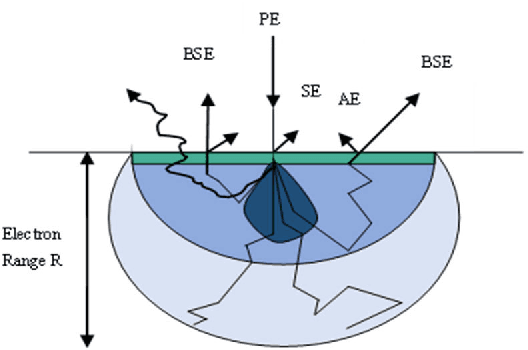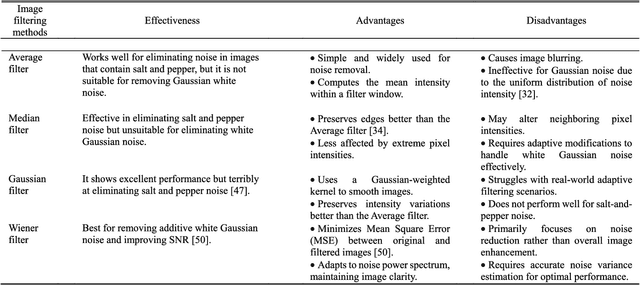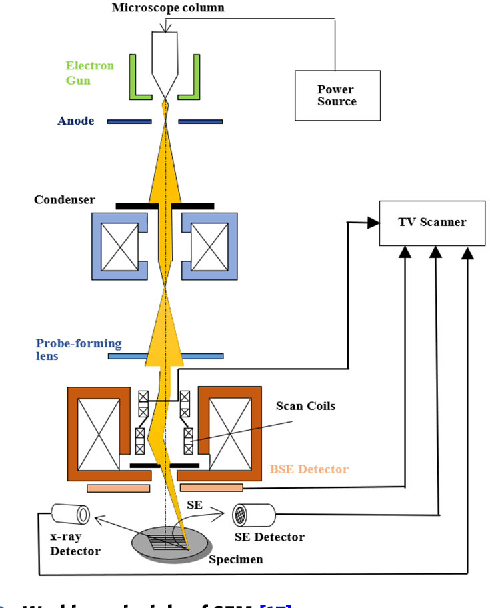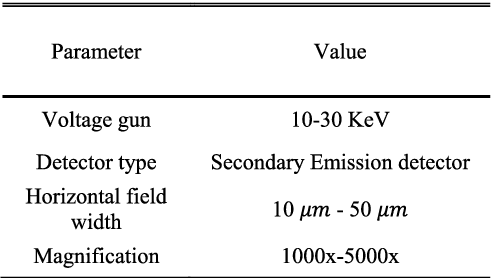Linear Regression Model
Papers and Code
On the Equivalence of Regression and Classification
Nov 06, 2025A formal link between regression and classification has been tenuous. Even though the margin maximization term $\|w\|$ is used in support vector regression, it has at best been justified as a regularizer. We show that a regression problem with $M$ samples lying on a hyperplane has a one-to-one equivalence with a linearly separable classification task with $2M$ samples. We show that margin maximization on the equivalent classification task leads to a different regression formulation than traditionally used. Using the equivalence, we demonstrate a ``regressability'' measure, that can be used to estimate the difficulty of regressing a dataset, without needing to first learn a model for it. We use the equivalence to train neural networks to learn a linearizing map, that transforms input variables into a space where a linear regressor is adequate.
How Data Mixing Shapes In-Context Learning: Asymptotic Equivalence for Transformers with MLPs
Oct 29, 2025Pretrained Transformers demonstrate remarkable in-context learning (ICL) capabilities, enabling them to adapt to new tasks from demonstrations without parameter updates. However, theoretical studies often rely on simplified architectures (e.g., omitting MLPs), data models (e.g., linear regression with isotropic inputs), and single-source training, limiting their relevance to realistic settings. In this work, we study ICL in pretrained Transformers with nonlinear MLP heads on nonlinear tasks drawn from multiple data sources with heterogeneous input, task, and noise distributions. We analyze a model where the MLP comprises two layers, with the first layer trained via a single gradient step and the second layer fully optimized. Under high-dimensional asymptotics, we prove that such models are equivalent in ICL error to structured polynomial predictors, leveraging results from the theory of Gaussian universality and orthogonal polynomials. This equivalence reveals that nonlinear MLPs meaningfully enhance ICL performance, particularly on nonlinear tasks, compared to linear baselines. It also enables a precise analysis of data mixing effects: we identify key properties of high-quality data sources (low noise, structured covariances) and show that feature learning emerges only when the task covariance exhibits sufficient structure. These results are validated empirically across various activation functions, model sizes, and data distributions. Finally, we experiment with a real-world scenario involving multilingual sentiment analysis where each language is treated as a different source. Our experimental results for this case exemplify how our findings extend to real-world cases. Overall, our work advances the theoretical foundations of ICL in Transformers and provides actionable insight into the role of architecture and data in ICL.
$L_1$-norm Regularized Indefinite Kernel Logistic Regression
Oct 30, 2025Kernel logistic regression (KLR) is a powerful classification method widely applied across diverse domains. In many real-world scenarios, indefinite kernels capture more domain-specific structural information than positive definite kernels. This paper proposes a novel $L_1$-norm regularized indefinite kernel logistic regression (RIKLR) model, which extends the existing IKLR framework by introducing sparsity via an $L_1$-norm penalty. The introduction of this regularization enhances interpretability and generalization while introducing nonsmoothness and nonconvexity into the optimization landscape. To address these challenges, a theoretically grounded and computationally efficient proximal linearized algorithm is developed. Experimental results on multiple benchmark datasets demonstrate the superior performance of the proposed method in terms of both accuracy and sparsity.
Conformalized Polynomial Chaos Expansion for Uncertainty-aware Surrogate Modeling
Oct 25, 2025This work introduces a method to equip data-driven polynomial chaos expansion surrogate models with intervals that quantify the predictive uncertainty of the surrogate. To that end, we integrate jackknife-based conformal prediction into regression-based polynomial chaos expansions. The jackknife algorithm uses leave-one-out residuals to generate predictive intervals around the predictions of the polynomial chaos surrogate. The jackknife+ extension additionally requires leave-one-out model predictions. The key to efficient implementation is to leverage the linearity of the polynomial chaos regression model, so that leave-one-out residuals and, if necessary, leave-one-out model predictions can be computed with analytical, closed-form expressions, thus eliminating the need for repeated model re-training. In addition to the efficient computation of the predictive intervals, a significant advantage of this approach is its data efficiency, as it requires no hold-out dataset for prediction interval calibration, thus allowing the entire dataset to be used for model training. The conformalized polynomial chaos expansion method is validated on several benchmark models, where the impact of training data volume on the predictive intervals is additionally investigated.
Calibrated Principal Component Regression
Oct 21, 2025We propose a new method for statistical inference in generalized linear models. In the overparameterized regime, Principal Component Regression (PCR) reduces variance by projecting high-dimensional data to a low-dimensional principal subspace before fitting. However, PCR incurs truncation bias whenever the true regression vector has mass outside the retained principal components (PC). To mitigate the bias, we propose Calibrated Principal Component Regression (CPCR), which first learns a low-variance prior in the PC subspace and then calibrates the model in the original feature space via a centered Tikhonov step. CPCR leverages cross-fitting and controls the truncation bias by softening PCR's hard cutoff. Theoretically, we calculate the out-of-sample risk in the random matrix regime, which shows that CPCR outperforms standard PCR when the regression signal has non-negligible components in low-variance directions. Empirically, CPCR consistently improves prediction across multiple overparameterized problems. The results highlight CPCR's stability and flexibility in modern overparameterized settings.
Shrinkage to Infinity: Reducing Test Error by Inflating the Minimum Norm Interpolator in Linear Models
Oct 22, 2025Hastie et al. (2022) found that ridge regularization is essential in high dimensional linear regression $y=\beta^Tx + \epsilon$ with isotropic co-variates $x\in \mathbb{R}^d$ and $n$ samples at fixed $d/n$. However, Hastie et al. (2022) also notes that when the co-variates are anisotropic and $\beta$ is aligned with the top eigenvalues of population covariance, the "situation is qualitatively different." In the present article, we make precise this observation for linear regression with highly anisotropic covariances and diverging $d/n$. We find that simply scaling up (or inflating) the minimum $\ell_2$ norm interpolator by a constant greater than one can improve the generalization error. This is in sharp contrast to traditional regularization/shrinkage prescriptions. Moreover, we use a data-splitting technique to produce consistent estimators that achieve generalization error comparable to that of the optimally inflated minimum-norm interpolator. Our proof relies on apparently novel matching upper and lower bounds for expectations of Gaussian random projections for a general class of anisotropic covariance matrices when $d/n\to \infty$.
Efficient reductions from a Gaussian source with applications to statistical-computational tradeoffs
Oct 08, 2025Given a single observation from a Gaussian distribution with unknown mean $\theta$, we design computationally efficient procedures that can approximately generate an observation from a different target distribution $Q_{\theta}$ uniformly for all $\theta$ in a parameter set. We leverage our technique to establish reduction-based computational lower bounds for several canonical high-dimensional statistical models under widely-believed conjectures in average-case complexity. In particular, we cover cases in which: 1. $Q_{\theta}$ is a general location model with non-Gaussian distribution, including both light-tailed examples (e.g., generalized normal distributions) and heavy-tailed ones (e.g., Student's $t$-distributions). As a consequence, we show that computational lower bounds proved for spiked tensor PCA with Gaussian noise are universal, in that they extend to other non-Gaussian noise distributions within our class. 2. $Q_{\theta}$ is a normal distribution with mean $f(\theta)$ for a general, smooth, and nonlinear link function $f:\mathbb{R} \rightarrow \mathbb{R}$. Using this reduction, we construct a reduction from symmetric mixtures of linear regressions to generalized linear models with link function $f$, and establish computational lower bounds for solving the $k$-sparse generalized linear model when $f$ is an even function. This result constitutes the first reduction-based confirmation of a $k$-to-$k^2$ statistical-to-computational gap in $k$-sparse phase retrieval, resolving a conjecture posed by Cai et al. (2016). As a second application, we construct a reduction from the sparse rank-1 submatrix model to the planted submatrix model, establishing a pointwise correspondence between the phase diagrams of the two models that faithfully preserves regions of computational hardness and tractability.
Learning Linear Regression with Low-Rank Tasks in-Context
Oct 06, 2025In-context learning (ICL) is a key building block of modern large language models, yet its theoretical mechanisms remain poorly understood. It is particularly mysterious how ICL operates in real-world applications where tasks have a common structure. In this work, we address this problem by analyzing a linear attention model trained on low-rank regression tasks. Within this setting, we precisely characterize the distribution of predictions and the generalization error in the high-dimensional limit. Moreover, we find that statistical fluctuations in finite pre-training data induce an implicit regularization. Finally, we identify a sharp phase transition of the generalization error governed by task structure. These results provide a framework for understanding how transformers learn to learn the task structure.
Adaptive Optimizable Gaussian Process Regression Linear Least Squares Regression Filtering Method for SEM Images
Oct 09, 2025



Scanning Electron Microscopy (SEM) images often suffer from noise contamination, which degrades image quality and affects further analysis. This research presents a complete approach to estimate their Signal-to-Noise Ratio (SNR) and noise variance (NV), and enhance image quality using NV-guided Wiener filter. The main idea of this study is to use a good SNR estimation technique and infuse a machine learning model to estimate NV of the SEM image, which then guides the wiener filter to remove the noise, providing a more robust and accurate SEM image filtering pipeline. First, we investigate five different SNR estimation techniques, namely Nearest Neighbourhood (NN) method, First-Order Linear Interpolation (FOL) method, Nearest Neighbourhood with First-Order Linear Interpolation (NN+FOL) method, Non-Linear Least Squares Regression (NLLSR) method, and Linear Least Squares Regression (LSR) method. It is shown that LSR method to perform better than the rest. Then, Support Vector Machines (SVM) and Gaussian Process Regression (GPR) are tested by pairing it with LSR. In this test, the Optimizable GPR model shows the highest accuracy and it stands as the most effective solution for NV estimation. Combining these results lead to the proposed Adaptive Optimizable Gaussian Process Regression Linear Least Squares Regression (AO-GPRLLSR) Filtering pipeline. The AO-GPRLLSR method generated an estimated noise variance which served as input to NV-guided Wiener filter for improving the quality of SEM images. The proposed method is shown to achieve notable success in estimating SNR and NV of SEM images and leads to lower Mean Squared Error (MSE) after the filtering process.
Multidata Causal Discovery for Statistical Hurricane Intensity Forecasting
Oct 02, 2025Improving statistical forecasts of Atlantic hurricane intensity is limited by complex nonlinear interactions and difficulty in identifying relevant predictors. Conventional methods prioritize correlation or fit, often overlooking confounding variables and limiting generalizability to unseen tropical storms. To address this, we leverage a multidata causal discovery framework with a replicated dataset based on Statistical Hurricane Intensity Prediction Scheme (SHIPS) using ERA5 meteorological reanalysis. We conduct multiple experiments to identify and select predictors causally linked to hurricane intensity changes. We train multiple linear regression models to compare causal feature selection with no selection, correlation, and random forest feature importance across five forecast lead times from 1 to 5 days (24 to 120 hours). Causal feature selection consistently outperforms on unseen test cases, especially for lead times shorter than 3 days. The causal features primarily include vertical shear, mid-tropospheric potential vorticity and surface moisture conditions, which are physically significant yet often underutilized in hurricane intensity predictions. Further, we build an extended predictor set (SHIPS+) by adding selected features to the standard SHIPS predictors. SHIPS+ yields increased short-term predictive skill at lead times of 24, 48, and 72 hours. Adding nonlinearity using multilayer perceptron further extends skill to longer lead times, despite our framework being purely regional and not requiring global forecast data. Operational SHIPS tests confirm that three of the six added causally discovered predictors improve forecasts, with the largest gains at longer lead times. Our results demonstrate that causal discovery improves hurricane intensity prediction and pave the way toward more empirical forecasts.
 Add to Chrome
Add to Chrome Add to Firefox
Add to Firefox Add to Edge
Add to Edge